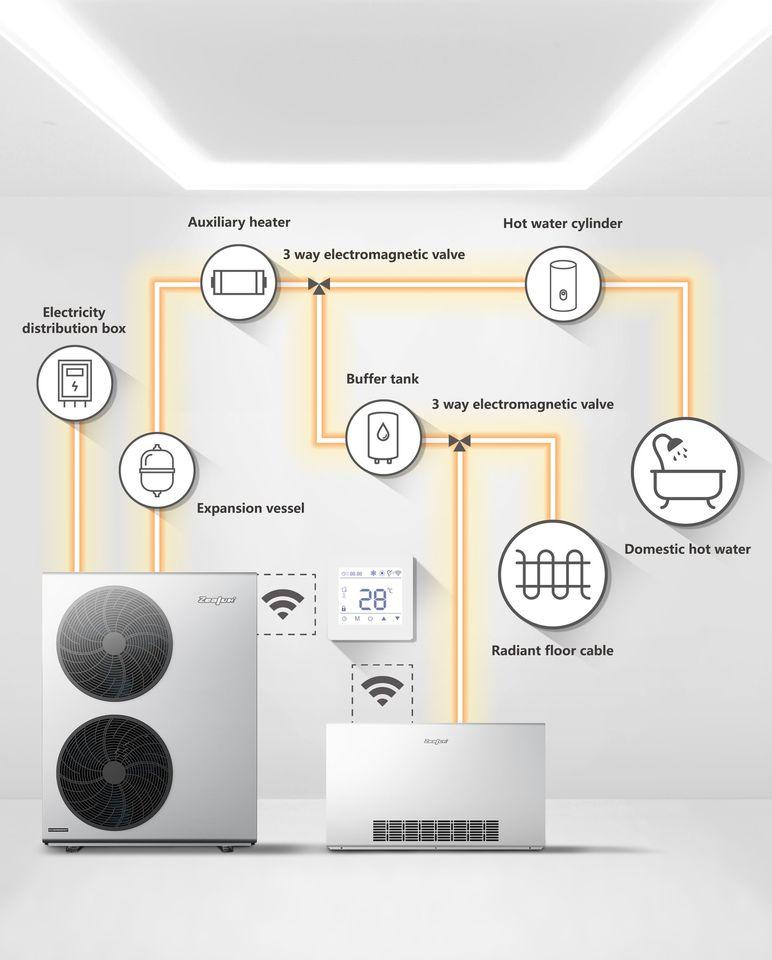Automotive detailing is more than just a thorough cleaning of your vehicle; it's a meticulous process that enhances and preserves the appearance and value of your car. Whether you're a car enthusiast who takes pride in maintaining a pristine vehicle or someone looking to protect your investment, understanding the intricacies of automotive detailing can be incredibly beneficial. In this comprehensive guide, we will delve into the various aspects of automotive detailing, including the steps involved, the tools and products required, and the benefits of regular detailing. We will also answer some frequently asked questions to help you get the most out of your detailing efforts.
What is Automotive Detailing?
Automotive detailing refers to the thorough cleaning, restoration, and protection of a vehicle, both inside and out. Unlike a regular car wash, which might simply clean the surface, detailing involves a much deeper cleaning process that addresses all aspects of the vehicle's appearance. This includes cleaning the exterior paint, chrome trim, windows, wheels, and tires, as well as the interior upholstery, carpets, and dashboard. The goal of automotive detailing is to bring the vehicle back to its best possible condition, enhancing its appearance and protecting it from environmental damage.
Exterior detailing typically starts with a thorough wash to remove dirt, grime, and contaminants from the surface. This is followed by a claying process to remove bonded contaminants that washing alone can't remove. After the claying process, the paint is polished to remove minor scratches and swirl marks, followed by applying a protective wax or sealant. The wheels, tires, and exterior trim are also cleaned and protected. On the interior, detailing involves vacuuming and shampooing the carpets and seats, cleaning and conditioning the leather, and cleaning the dashboard, door panels, and other surfaces. In essence, automotive detailing goes beyond the superficial, offering a comprehensive cleaning and protection process that extends the life and look of your vehicle.
The Importance of Regular Automotive Detailing
Regular automotive detailing is essential for maintaining your vehicle's appearance and value over time. Cars are constantly exposed to harsh environmental elements such as UV rays, road salt, dirt, and pollution, all of which can cause damage to the paint, trim, and interior surfaces. Without proper care, these elements can lead to fading, rusting, and general wear and tear, which can significantly reduce the resale value of your car. Detailing helps protect against this damage by providing a protective layer on the exterior and conditioning the interior materials, keeping them in top condition.
Moreover, a clean car not only looks better but also provides a more enjoyable driving experience. When your car is clean and well-maintained, it reflects your attention to detail and pride in ownership. Regular detailing also helps to maintain a healthy interior environment by removing allergens, dust, and bacteria that can accumulate over time. For those who plan to sell or trade in their vehicle, a well-detailed car can command a higher price, making detailing a worthwhile investment.
The Steps Involved in Automotive Detailing
Automotive detailing is a multi-step process that requires attention to detail and the right tools and products. While the specific steps may vary depending on the vehicle and the condition it's in, a typical detailing process includes the following:
-
Exterior Wash and Dry: The first step in exterior detailing is a thorough wash to remove dirt, grime, and other contaminants. This involves using a pH-balanced car shampoo and a microfiber wash mitt to gently clean the surface. After washing, the car is dried using a soft microfiber towel to prevent water spots.
-
Claying: After washing, a clay bar is used to remove bonded contaminants from the paint surface. These contaminants, such as brake dust, industrial fallout, and tree sap, can become embedded in the paint and are not removed by washing alone. Claying provides a smooth surface for the next steps.
-
Polishing: Polishing is an essential step in restoring the paint's shine and removing minor scratches and swirl marks. A polishing compound is applied using a dual-action polisher, which helps to even out the paint surface and enhance its gloss.
-
Waxing/Sealing: To protect the paint and enhance its shine, a layer of wax or paint sealant is applied. Waxing adds a protective layer that shields the paint from UV rays, road salt, and other environmental contaminants, while also providing a deep, glossy finish.
-
Wheel and Tire Cleaning: Wheels and tires are often neglected in a standard car wash, but they are an important part of the detailing process. Wheels are cleaned with a dedicated wheel cleaner and a brush to remove brake dust and road grime, while the tires are cleaned and dressed to restore their deep black color.
-
Interior Detailing: The interior of the car is thoroughly cleaned, starting with vacuuming the carpets, seats, and trunk. The dashboard, door panels, and other surfaces are wiped down and cleaned with an appropriate cleaner. Leather seats are cleaned and conditioned, and fabric seats and carpets may be shampooed to remove stains and odors.
-
Glass Cleaning: All windows and mirrors are cleaned using a streak-free glass cleaner to ensure clear visibility. This step is crucial for both the appearance of the car and the safety of the driver.
-
Final Touches: The final step in the detailing process is to inspect the vehicle and add any finishing touches. This may include dressing the trim, applying a tire shine, and doing a final wipe-down to ensure the car looks its best.
The Tools and Products You Need for Automotive Detailing
To achieve professional-level results, it's important to use the right tools and products for automotive detailing. While there are many products on the market, some of the essential items you will need include:
- Car Shampoo: A pH-balanced car shampoo is essential for safely cleaning the exterior without stripping away wax or sealant.
- Clay Bar: A clay bar is used to remove bonded contaminants from the paint surface.
- Polishing Compound: Polishing compounds help remove minor scratches and swirl marks, restoring the paint's shine.
- Wax or Paint Sealant: Wax or sealant provides a protective layer over the paint, enhancing its gloss and protecting it from the elements.
- Microfiber Towels: Microfiber towels are soft and non-abrasive, making them ideal for drying, polishing, and buffing.
- Wheel Cleaner: A dedicated wheel cleaner is formulated to remove brake dust and road grime without damaging the wheels.
- Tire Dressing: Tire dressing helps restore the deep black color of the tires and provides a protective layer.
- Interior Cleaner: An appropriate interior cleaner is needed to clean the dashboard, door panels, and other surfaces.
- Leather Conditioner: For cars with leather seats, a leather conditioner helps keep the leather soft, supple, and protected from cracking.
- Glass Cleaner: A streak-free glass cleaner ensures clear visibility by leaving windows and mirrors spotless.
Investing in high-quality detailing products and tools can make a significant difference in the results you achieve. Additionally, using the right products will help protect your vehicle's surfaces and extend the life of your detailing efforts.
Benefits of Professional Automotive Detailing
While many car owners choose to detail their vehicles themselves, there are several benefits to hiring a professional detailing service. Professional detailers have the experience, tools, and products necessary to achieve superior results, often going beyond what can be achieved with DIY methods. Some of the benefits of professional detailing include:
-
Expertise: Professional detailers have the knowledge and experience to handle a wide range of vehicles and conditions. They know the best techniques for cleaning and protecting different surfaces and can tailor their approach to meet the specific needs of your car.
-
Time Savings: Detailing a vehicle can be a time-consuming process, especially if you're aiming for perfection. By hiring a professional, you can save yourself hours of work and still enjoy a beautifully detailed car.
-
Access to Professional-Grade Products: Professional detailers have access to high-quality, professional-grade products that may not be available to the average consumer. These products often deliver better results and longer-lasting protection.
-
Attention to Detail: Professional detailers are trained to pay attention to every detail, ensuring that no spot is missed. They take the time to address all areas of the vehicle, including those that are often overlooked in DIY detailing.
-
Enhanced Resale Value: A professionally detailed car is likely to have a higher resale value. Prospective buyers are often willing to pay more for a car that looks well-maintained and in excellent condition.
-
Convenience: Many professional detailers offer mobile services, allowing you to have your car detailed at your home or office. This added convenience can make it easier to keep your car looking its best without disrupting your schedule.
How Often Should You Detail Your Car?
The frequency of automotive detailing depends on several factors, including your driving habits, the climate you live in, and the level of care you want to provide for your vehicle. In general, it is recommended to detail your car every three to six months. However, if your car is exposed to harsh conditions such as road salt, heavy rain, or extreme heat, more frequent detailing may be necessary to maintain its appearance and protect it from damage.
For those who take pride in their vehicle's appearance, a monthly detailing routine can help keep the car in showroom condition. On the other hand, if your primary concern is preserving the car's value and preventing long-term damage, a bi-annual detailing schedule may be sufficient.
Ultimately, the key to effective automotive detailing is consistency. Regular detailing not only keeps your car looking its best but also helps protect it from the wear and tear that can occur over time. By following a regular detailing schedule and using high-quality products, you can extend the life of your vehicle and enjoy the satisfaction of driving a car that looks and feels like new.
FAQs
1. What is the difference between a car wash and automotive detailing?
A car wash is a basic cleaning of the exterior of the car, typically involving soap, water, and a rinse. Automotive detailing, on the other hand, is a more comprehensive process that includes cleaning, restoring, and protecting both the exterior and interior of the vehicle. Detailing goes beyond surface cleaning, addressing issues like paint correction, interior conditioning, and protection against environmental damage.
2. How long does it take to detail a car?
The time it takes to detail a car depends on the size of the vehicle, the condition it's in, and the level of detailing being performed. A basic detailing job might take anywhere from 2 to 4 hours, while a more extensive detailing session, including paint correction and interior cleaning, could take 6 to 8 hours or more. Professional detailers may take even longer to ensure every aspect of the car is thoroughly cleaned and protected.
3. Can automotive detailing remove scratches from my car's paint?
Automotive detailing can remove minor scratches and swirl marks from the paint using polishing compounds and techniques. However, deeper scratches that have penetrated the clear coat or paint may require more extensive repair, such as paint touch-up or even repainting. Detailers can assess the severity of the scratches and recommend the best course of action.
4. Is it necessary to wax my car after detailing?
Yes, waxing your car after detailing is essential for protecting the paint and maintaining the glossy finish. Wax acts as a protective barrier against environmental contaminants like UV rays, road salt, and pollution. It also enhances the shine of the paint, making your car look its best. Regular waxing can extend the life of the paint and keep your car looking new.
5. How can I maintain the results of a professional detailing job?
To maintain the results of a professional detailing job, it's important to follow a regular maintenance routine. This includes washing your car regularly with a pH-balanced shampoo, using a clay bar to remove contaminants, and applying wax or sealant every few months. Additionally, keeping the interior clean by vacuuming and wiping down surfaces will help preserve the fresh look and feel of your car.
6. Can I detail my car myself, or should I hire a professional?
While it is possible to detail your car yourself, hiring a professional detailer can offer better results, especially if you're looking for a thorough and long-lasting finish. Professional detailers have the expertise, tools, and products to address all aspects of your car's appearance. However, if you enjoy working on your car and have the time and patience, DIY detailing can be a rewarding experience.
7. What are the risks of not detailing my car regularly?
Neglecting regular automotive detailing can lead to a variety of issues, including paint damage, fading, rust, and a decrease in the vehicle's resale value. Environmental contaminants like road salt, bird droppings, and tree sap can cause long-term damage if not removed promptly. Additionally, a dirty interior can lead to the buildup of allergens, bacteria, and unpleasant odors. Regular detailing helps prevent these problems and keeps your car in top condition.
8. How much does professional automotive detailing cost?
The cost of professional automotive detailing varies depending on the size of the vehicle, the level of detailing required, and the location. Basic detailing services may start around $100 to $150, while more comprehensive services, including paint correction and interior conditioning, can range from $200 to $500 or more. Mobile detailing services may also charge a premium for the convenience of coming to your location.
9. Can detailing help restore the appearance of an older car?
Yes, automotive detailing can significantly improve the appearance of an older car by restoring the paint's shine, cleaning and conditioning the interior, and addressing minor cosmetic issues. While detailing may not be able to fix major defects, such as deep scratches or dents, it can enhance the overall look of the car and make it appear newer. For older cars, detailing is a cost-effective way to refresh the vehicle and increase its value.
10. How do I choose the right automotive detailing service?
When choosing an automotive detailing service, it's important to research and read reviews to find a reputable and experienced detailer. Look for a service that uses high-quality products and offers a range of detailing packages to suit your needs. Ask about the detailer's experience with your specific type of vehicle, and don't be afraid to ask for before-and-after photos of previous work. A good detailer should be transparent about their process and willing to answer any questions you have.





